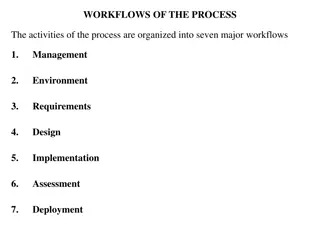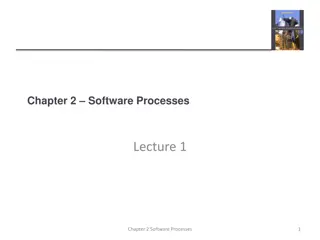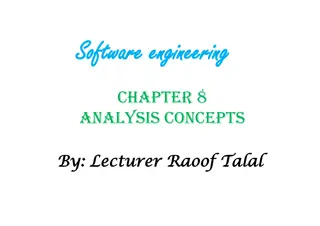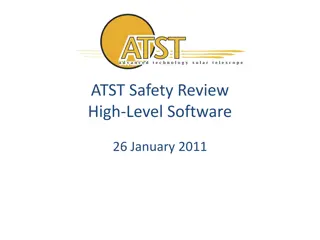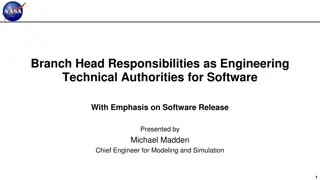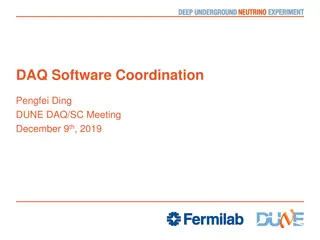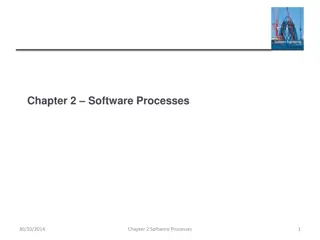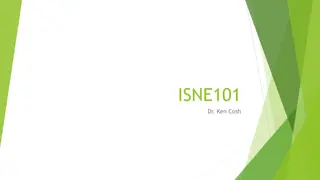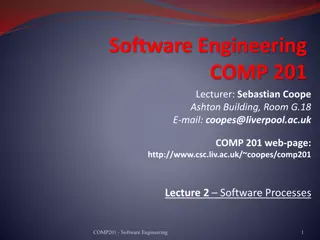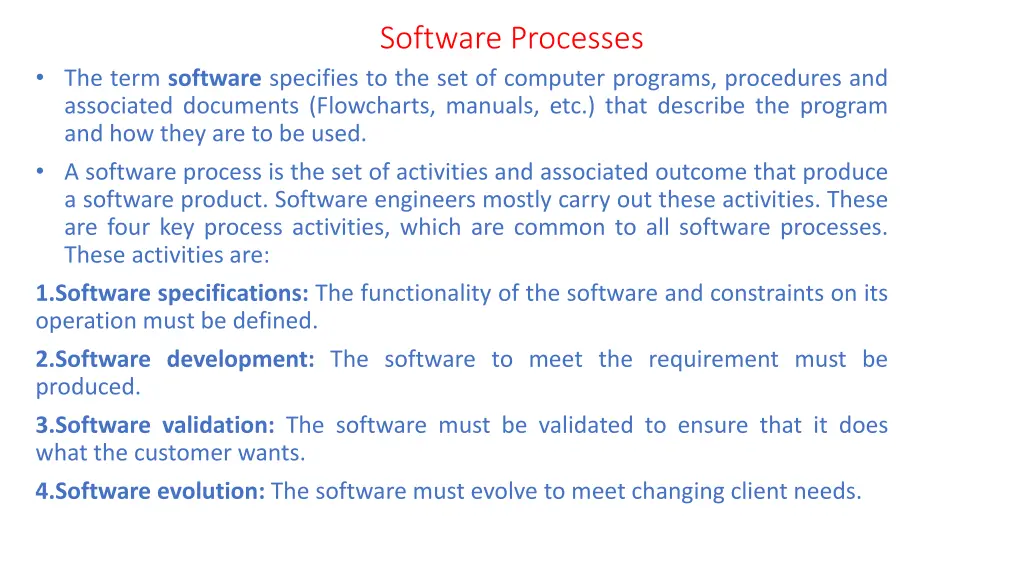
Understanding Software Processes, Models, and the Software Crisis
Explore the concept of software processes, models, and the challenges faced in the software industry, including the software crisis. Learn about key activities in software development, different types of process models, and the evolving nature of software engineering.
Download Presentation

Please find below an Image/Link to download the presentation.
The content on the website is provided AS IS for your information and personal use only. It may not be sold, licensed, or shared on other websites without obtaining consent from the author. If you encounter any issues during the download, it is possible that the publisher has removed the file from their server.
You are allowed to download the files provided on this website for personal or commercial use, subject to the condition that they are used lawfully. All files are the property of their respective owners.
The content on the website is provided AS IS for your information and personal use only. It may not be sold, licensed, or shared on other websites without obtaining consent from the author.
E N D
Presentation Transcript
Software Processes The term software specifies to the set of computer programs, procedures and associated documents (Flowcharts, manuals, etc.) that describe the program and how they are to be used. A software process is the set of activities and associated outcome that produce a software product. Software engineers mostly carry out these activities. These are four key process activities, which are common to all software processes. These activities are: 1.Software specifications: The functionality of the software and constraints on its operation must be defined. 2.Software development: The software to meet the requirement must be produced. 3.Software validation: The software must be validated to ensure that it does what the customer wants. 4.Software evolution: The software must evolve to meet changing client needs.
The Software Process Model A software process model is a specified definition of a software process, which is presented from a particular perspective. Models, by their nature, are a simplification, so a software process model is an abstraction of the actual process, which is being described. Process models may contain activities, which are part of the software process, software product, and the roles of people involved in software engineering. Some examples of the types of software process models that may be produced are: A workflow model: This shows the series of activities in the process along with their inputs, outputs and dependencies. The activities in this model perform human actions. 2. A dataflow or activity model: This represents the process as a set of activities, each of which carries out some data transformations. It shows how the input to the process, such as a specification is converted to an output such as a design. The activities here may be at a lower level than activities in a workflow model. They may perform transformations carried out by people or by computers. 3. A role/action model: This means the roles of the people involved in the software process and the activities for which they are responsible.
Software Crisis Size: Software is becoming more expensive and more complex with the growing complexity and expectation out of software. For example, the code in the consumer product is doubling every couple of years. Quality: Many software products have poor quality, i.e., the software products defects after putting into use due to ineffective testing technique. For example, Software testing typically finds 25 errors per 1000 lines of code. Cost: Software development is costly i.e. in terms of time taken to develop and the money involved. For example, Development of the FAA's Advanced Automation System cost over $700 per lines of code. Delayed Delivery: Serious schedule overruns are common. Very often the software takes longer than the estimated time to develop, which in turn leads to cost shooting up. For example, one in four large-scale development projects is never completed.
Program vs. Software Software is more than programs. Any program is a subset of software, and it becomes software only if documentation & operating procedures manuals are prepared.



